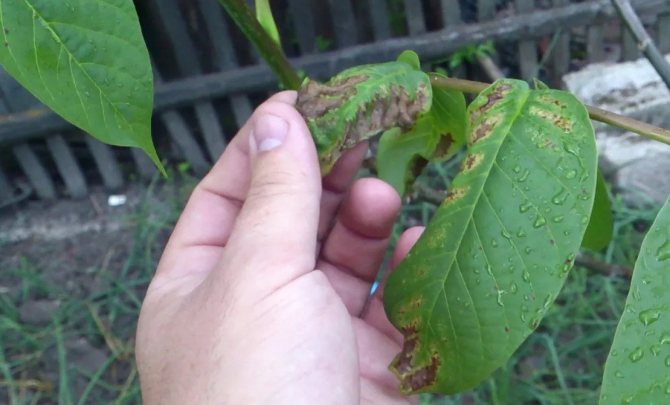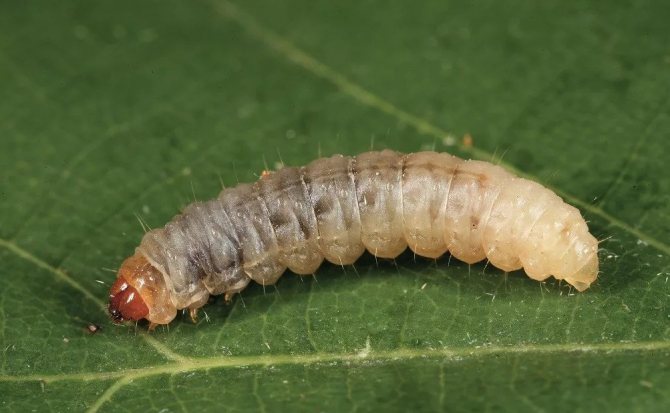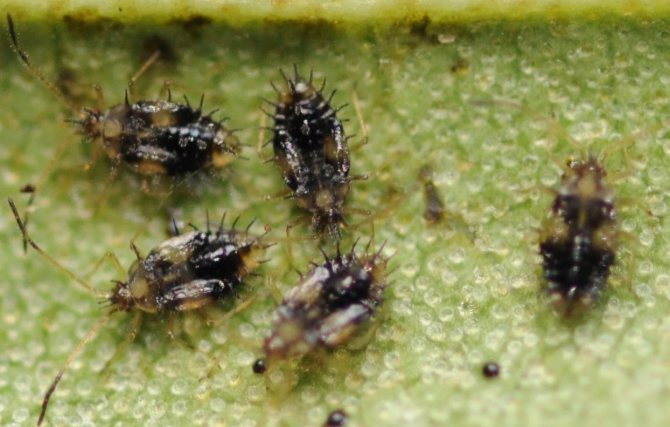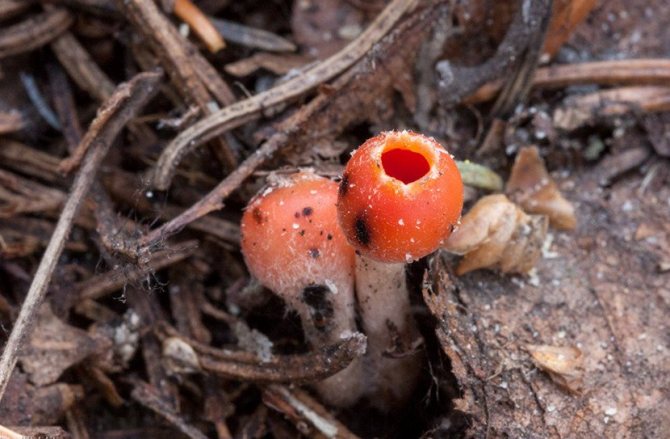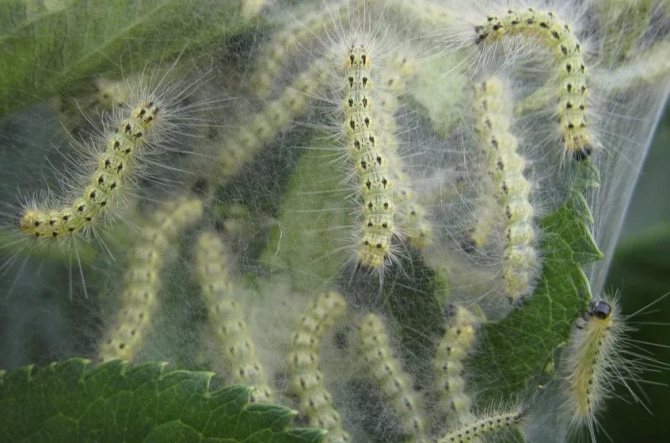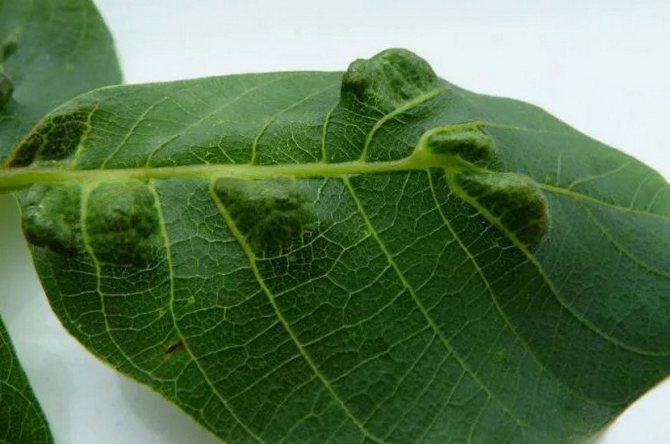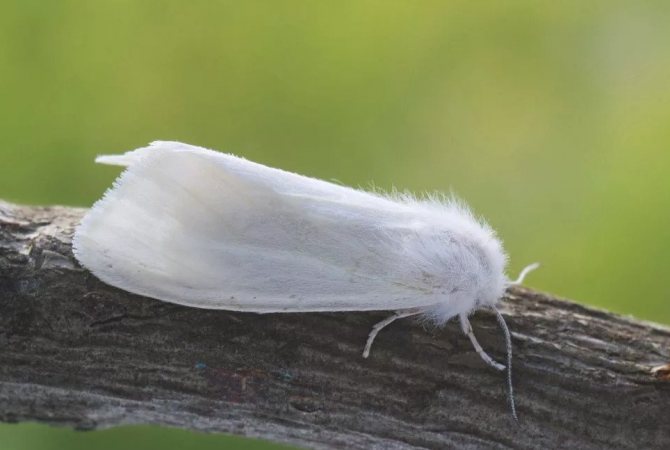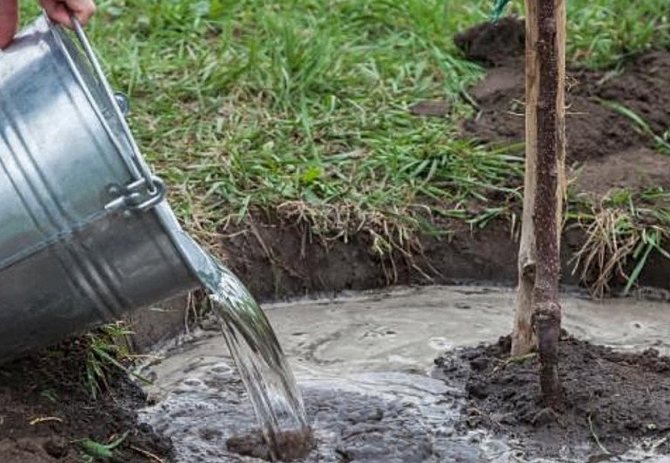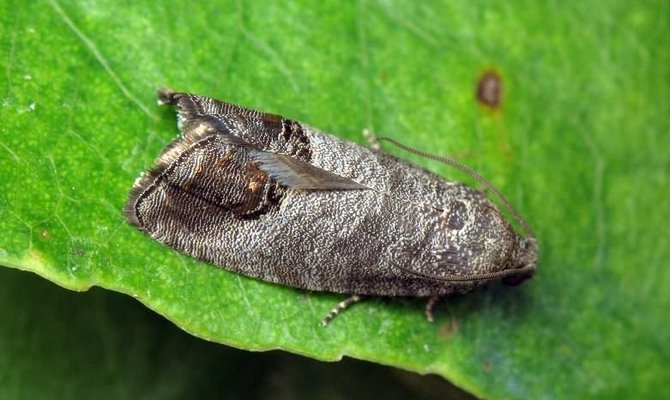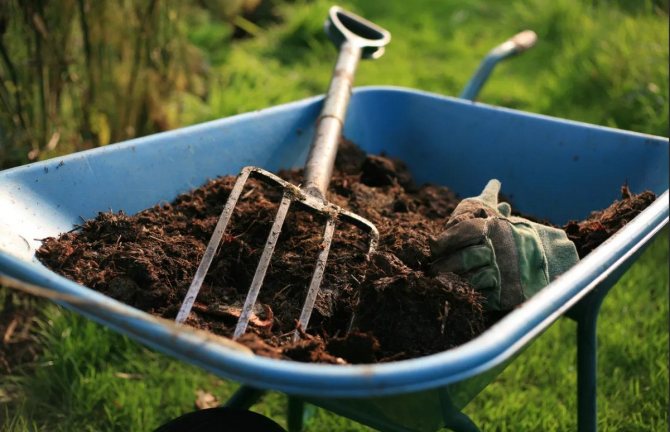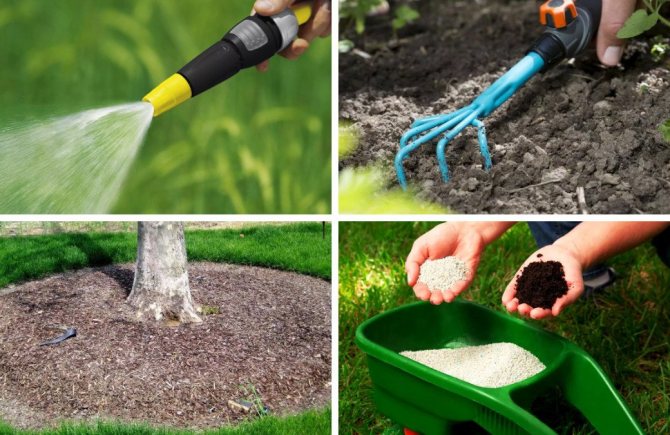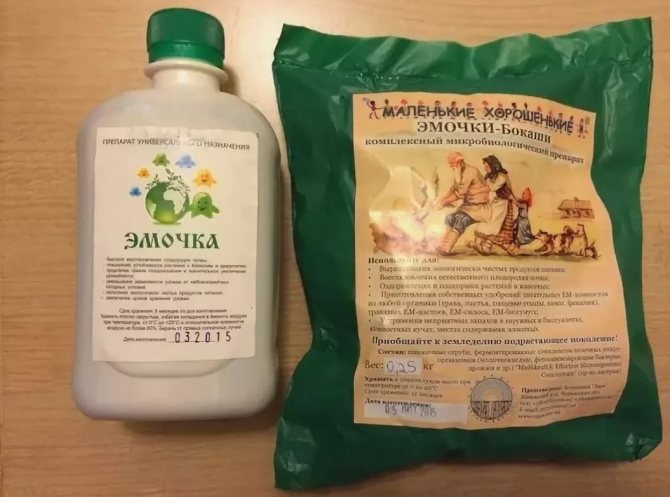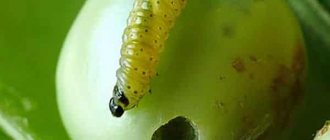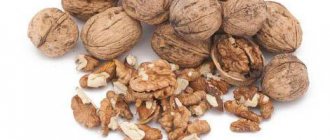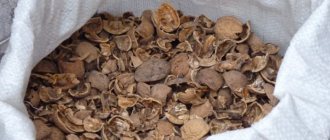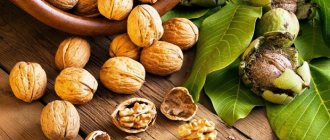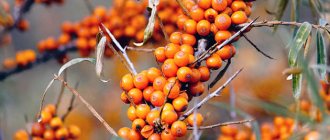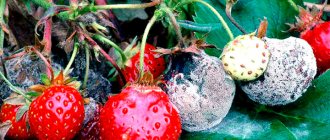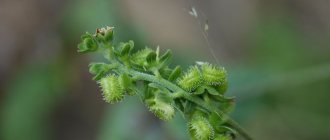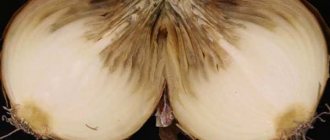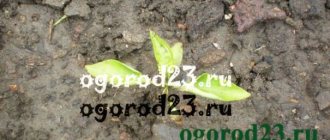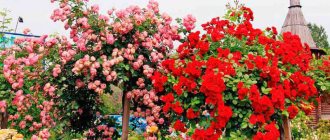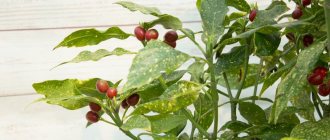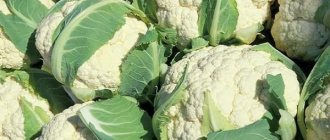Types of diseases and methods of treatment
So that the walnut tree does not die from the disease, it is important to know how to help the tree and how to process it in each case. Further, it is described what plants are sick with and how to treat them.
Bacteriosis
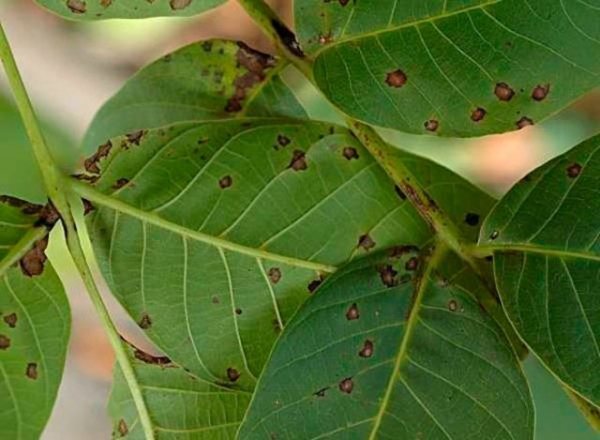
An infectious disease that manifests itself as brown spots on the leaves, branches and fruits of the tree. Dampness and constant rains especially contribute to its spread. If bacteriosis appears during flowering, then most of the crop can be considered lost. Those parts of the plant on which spots have appeared gradually dry up and fall off.
Attention!
The bacteriosis that appears after the flowering of a tree affects wood and fruits.
Control measures:
- Folk. One of the radical ways to defeat bacteriosis is to cut and burn diseased shoots. They are cut 15 cm below the affected area. If the disease has just begun, you can scrape off the affected areas with a special knife. In the fall, you need to dig deep into the soil in the garden to enrich the root system with oxygen. This action will not only help to enrich the soil with oxygen, but will also help the nut to grow stronger. Deep digging must be done carefully, since even small damage to the roots and trunk is immediately attacked by harmful bacteria.
- Chemical. Against bacteriosis, the tree is treated with preparations containing copper. Spraying is carried out with Bordeaux liquid 3%, urea 1%, copper oxychloride 0.7%. Instructions for preparing 3% Bordeaux liquid:
- take 300 g of copper sulfate, 300 g of slaked lime, 10 liters of water;
- separately (!) dissolve each component in water;
- first dissolve copper sulfate in a small amount of water (0.5 l);
- then add warm water (4.5 l) to the solution;
- dissolve lime in another container in 5 liters of water, stir gently until uniform;
- pour copper sulfate into a lime solution (in no case the other way around!);
- the cooled liquid can be sprayed on plants.
Bordeaux liquid solution must be used immediately. The next day, its properties disappear.
Marsoniasis
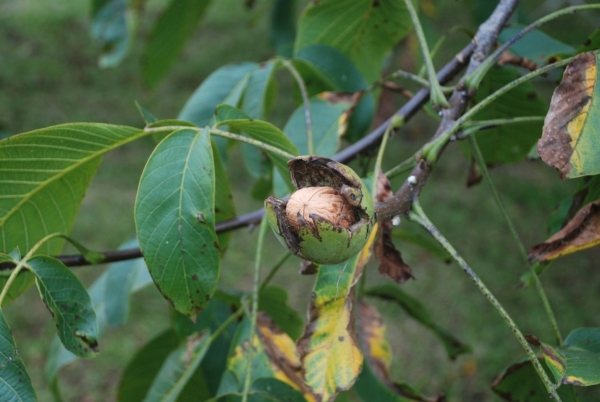

The disease is very similar to the previous one. Brown spots of a vague shape appear on the leaves. Gradually, they spread to other parts of the plant. Affected leaves and flowers fall off.
Important!
If spotting starts during flowering, the tree can shed up to 90% of the flowers. This is fraught with almost complete loss of crops.
Control methods:
- Folk:
- You can dilute whey (1 L) in 1 bucket of water and spray the trees.
- Dilute 15 drops of iodine in 0.5 liters of low-fat milk, add 5 liters of water and spray.
- Grind the arrows (or cloves) of garlic in the amount of 0.5 kg, insist for 24 hours in a 10 liter bucket of water. Spray trees with the resulting infusion.
- Chemical. Walnut is sprayed with insecticidal preparations: Ordan, Ridomil, Fitosporin-M, Horus, Fundazol. These substances are used against fungal diseases. Also, spraying with 3% Bordeaux liquid is made on the still dormant kidneys and then, after 10 days, they are sprayed with 1% solution. Preparation of 1% Bordeaux liquid:
- take 100 g of copper sulfate and slaked lime;
dissolve both substances separately in warm water (1 liter each);
- carefully combine together, pouring copper sulfate into lime;
- bring the total volume of liquid to 5 liters.
The use of chemicals during and after flowering is undesirable. Walnut has the ability to accumulate harmful substances in the fruit.
Root cancer
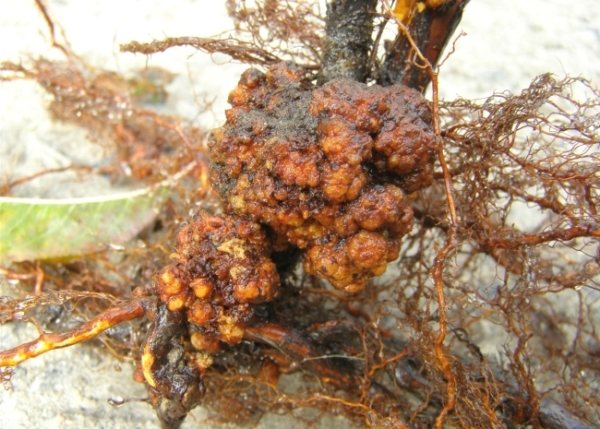

The disease affects the roots of young and adult plants. Growths form on them, as a result of which the nut stops growing and bearing fruit, and in some cases even dies.
Attention!
Root cancer is difficult to diagnose, since it is possible to understand exactly what it is only by digging out a seedling.
Control methods:
- Folk. It is advisable to dig out the seedling and remove the growths completely, clean the root, and plant it again. For prevention, regular examinations of the bark, trunk, large branches are necessary.
- Chemical. Since the causative agent of cancer penetrates through lesions in the bark, cracks, it is necessary to carefully monitor the condition of the tree. All growths, damage, cracks must be cleaned and treated with preparations with copper, then caustic soda, covered with garden varnish and whitewashed with lime. If the damage is deep enough, you must first rinse them with a hose stream and only then process.
Bacterial burn
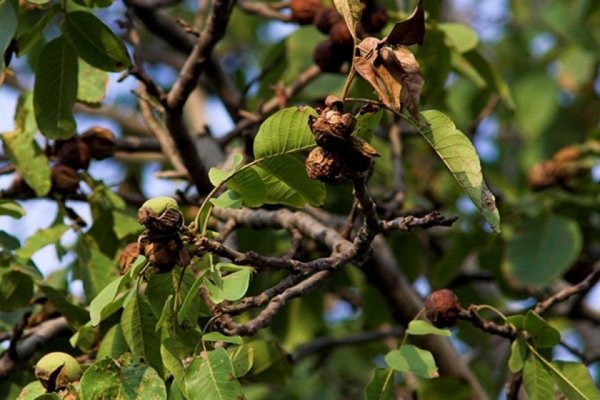

A dangerous disease that affects almost all parts of the tree. Watery spots appear on the leaves, petioles, fruits and flowers. After a while, they turn black and become ulcers. The affected parts do not die off immediately. The disease spreads rapidly in wet weather.
Advice
Insects carry a fire blight along with pollen. Affected seedlings and trees will have to be cut out completely, their fruits will be burned. If this is not done in time, the disease will very quickly spread to other trees.
Control methods:
- Folk:
- Cut and burn affected branches in time, monitor the condition of the garden.
- Abundant watering enhances the development of fire blight, so watering should be reduced.
- Dig up sick trees and burn them.
- Chemical. Trees with a small lesion can still be saved if they are sprayed with preparations with copper: Bordeaux liquid 1%, Tsinebom, HOM. Treat trees with insecticidal preparations only in dry weather, in the absence of wind. We must not forget about security measures. Hands should be protected with gloves, eyes - with special glasses, a mask should be put on the face.
White spot
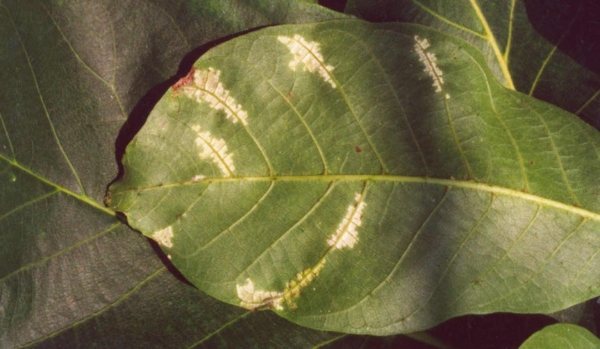

Compared to other diseases, white spot is less common. It is a fungus that appears on the inside of the leaves in the form of light spots.
Important!
White spotting is more pronounced in wet, rainy weather, especially in dense plantings, where plants quickly become infected from each other.
Control methods:
- Folk. In order to prevent the disease from spreading, it must be properly cared for. Excessive moisture aggravates the course of the disease of the plant. Therefore, it is necessary to provide more light, reduce watering, thin out the planting.
- Chemical. Plants are treated with 1% Bordeaux mixture. Spraying with copper preparations is carried out once or twice with an interval of 20 days.
The basics of proper wood care
Walnut is a tree that grows in almost every garden. His life expectancy is long. There are specimens bearing fruit for 400 years. In order to prevent the appearance of diseases and pests, you need to competently approach planting and fully take care of the walnut:
- The soil at the planting site must be fertile. It is dug up with humus or compost.
- The groundwater level should not be high. The planting hole must be drained.
- The place is chosen in the sun. The tree does not tolerate shading, it may die.
- After planting, the root collar of the walnut should be level with the soil.
They start planting in early spring; in autumn, planting a nut is possible only in the southern regions.The seedling manages to take root before the first frost.
Complete walnut care consists of several points:
- pruning;
- whitewash;
- watering;
- top dressing;
- organization of wintering.
Pruning begins in spring when the temperature rises to + 4 ... + 5 ° С. Cut out all the shoots that thicken the crown and interfere with its good ventilation. After that, dry and poorly overwintered branches are removed. The procedure is completed by whitewashing the trunk and skeletal branches. Previously, old bark, lichens or growths are removed. The trunk is treated with a solution of copper sulfate, after which it is thoroughly whitewashed.
It is no secret for an experienced gardener that walnuts need abundant watering, especially if the weather is dry. The soil is moistened to the full depth of the roots. During extreme heat, water the tree 2 or 3 times a month. At the same time, 3-4 buckets of water are consumed per plant.
You can fertilize the seedling 3 years after planting. If the planting pit was filled according to all the rules, then there will be enough top dressing for this entire period. In the spring and autumn, ammonium nitrate is introduced, in the summer they switch to fertilizing with phosphorus and potassium.
Adult nuts winter well without additional shelter, but young seedlings must be insulated before the onset of cold weather. The trunk circle is mulched with humus to a height of 10 cm.
Important! Walnut tolerates short-term frosts down to -30 ° С.
What can be amazed?
Trunk
The trunk, branches are susceptible to the following diseases:
- bacterial burn;
- root cancer;
- bacteriosis.
Leaves
Leaves are affected by the following diseases:
- brown spotting;
- white spot;
- bacterial burn;
- bacteriosis.
Fruit
Fruits can infect the following diseases:
- brown spotting;
- bacterial burn;
- bacteriosis.
Root cancer or goiter in walnut roots
Root cancer appears on the roots in the form of growths and sagging. With severe damage, the plant stops developing - especially if the disease develops against the background of a lack of moisture.


The causative agent of root goiter is the soil-living bacillus Agrobacterium tumefaciens. It penetrates into the roots through wounds and provokes active growth of root tissues, disrupting its normal structure.
There is no way to cure root cancer - so you have to limit yourself to prevention. For planting a nut, you should use areas where fruit and other crops that may be affected by root cancer have not grown for many years. In addition, you should carefully examine the root system of the seedlings when purchasing and before planting. If there are growths on the roots, the affected roots are removed. It is advisable to treat the root system with a 1% solution of acoustic soda (exposure time - 5 minutes), and then rinse with clean water. Saplings with severe damage to the main root or root collar are burned.
Pests and methods of dealing with them
Butterfly
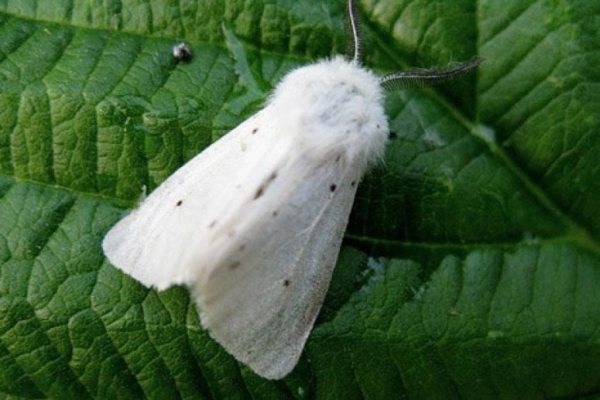

The American white butterfly is one of the most dangerous pests walnut. The whole butterfly is white, with small rare black specks. This insect settles on the branches and eats the foliage of trees. Butterflies lay eggs, and caterpillars hatch from them.
Attention!
Tremendous harm is done to the tree, since caterpillars can hibernate in the bark, and subsequent generations, multiplying, further harm both leaves and fruits.
Control methods:
- Folk:
- You can destroy insects by collecting them and burning nests.
- Special trapping belts are used against the caterpillars, which do not allow them to get to the foliage.
- Trees should be inspected every week.
- Chemical. Spraying with microbiological preparations "Lepidocid", "Dendrobacillin", "Bitoxibacillin" is effective. All substances are diluted according to the instructions attached to the drug, without exceeding the dosage. 3-5 liters of liquid are consumed per tree.
It is very difficult to fight the white butterfly, as it gives several generations per season.
Aphid


Aphids live on buds and leaves, especially on the underside. Small insects literally stick around the leaves, sucking out the juice. The plant weakens, the leaves dry, fall off.
Advice
Pests attack in whole colonies, especially after rain. If you do not start fighting them in time, the plant may lose fruits.
Control methods:
- Folk. To combat aphids, infusions and decoctions of plants are used, as well as soap-soda or soap solutions.
- grate ¼ a bar of laundry or tar soap;
add 1 tbsp. soda ash, dissolve in 1 liter of warm water;
- spray the plants in the evening until the pests disappear.
Dandelion infusion:
- take leaves (400 g) and roots (200 g) from flowering dandelions, grind them;
- insist in 10 liters of water for 3-4 hours;
- spray the nut several times a week.
Infusion with the addition of essential oil:
- to prepare the solution, you can use any essential oil - thyme, lavender, cedar;
- add 10-15 drops of essential oil to a glass of cream, add 2 more glasses of water;
- spray the plants with the resulting solution 2 times a day.
Treatment with folk remedies is more effective with a small number of pests or as a prophylaxis.
Moth
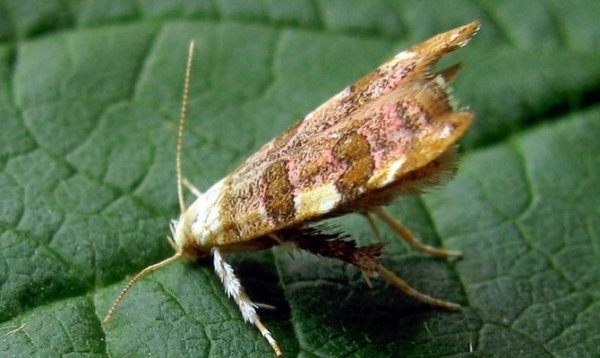

Nut moth is very harmful. It appears even on young seedlings, eating the pulp of the leaves, and lays eggs in them.
Important!
The moth is difficult to find as it has a color similar to that of the bark.
Control methods:
- Folk. The moth is afraid of pungent odors, therefore, spraying with pungent odors is used to scare it away (adding essential oil, garlic, marigolds, wormwood).
- Chemical. From chemical agents for processing plants, Decis, Decamethrin are suitable. Walnuts are processed in 15-20 days.
Moth
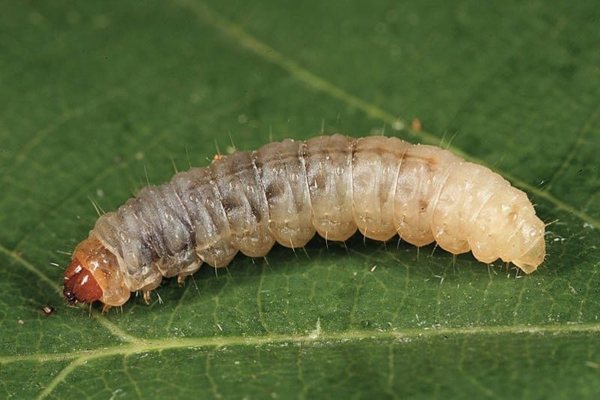

This insect's name speaks for itself: it eats the kernels of nuts. Both the first and second generation caterpillars cause significant damage to trees.
Attention!
Nuts, even being on a tree, completely disappear, as they are eaten away from the inside.
Control methods:
- Folk:
- In order to destroy the moth, they collect all the affected nuts and burn them.
- Trapping belts are put on the trees, in which the caterpillars are collected.
- Chemical:
- Of the chemical insecticides, Actellic is most often used. They are sprayed with trees in late May - early June. The consumption of the drug is 12 ml per 10 liters of water.
If the trees are very badly affected, strong chemicals are used: Calypso, Varant, Tanrek.
It is important to remember that chemical treatment is very harmful and is used only in extreme cases.
Mite
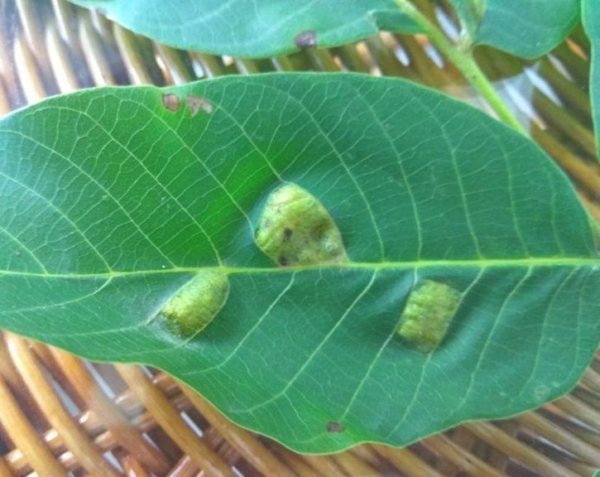

The gall mite is very small in size: it reaches only 1 mm. But it brings great harm: settling in dormant buds, the mite spoils the leaves, slowing down the growth of shoots.
Advice
The presence of the pest can be noticed by the characteristic brown warts on the leaves. It does not harm the fruits.
Control methods:
- Folk. Fighting the tick with folk methods does not bring tangible results.
- Chemical. Chemicals Akarin, Aktara are used. Sprinkle the nut twice a month.
Sapwood
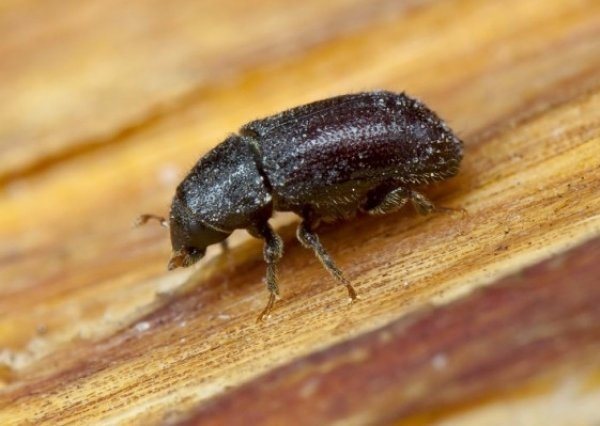

The beetle appears in a completely inconspicuous way. It starts up under the bark, gnawing through the passages. You can notice it only when there are already types of consequences of its activity: the flow of juice, channels in the bark, especially next to the leaves.
Important!
The sapwood greatly weakens the trees, eroding them from the inside.
Control methods:
- Folk. It is imperative to inspect trees, cutting out diseased and damaged branches. Pests can hide in lichens and mosses and must be removed from the tree trunk.The main trunk and large branches must be whitewashed with lime in the spring.
- Chemical. For spraying with insecticides, the following drugs are used: Aktara, Vector, Confidor, Mospilan. Processing is carried out after 14 days.
Prevention measures
In order to preserve the harvest, the following prevention methods must be followed:
- in early spring, the soil in the place of tree growth must be loosened and fertilized;
- cut off all dry and damaged areas of the tree;
- timely remove weeds that can act as a source of infection;
- timely remove all foliage after it has fallen;
- spray with Bordeaux liquid in the fall for prevention;
- in the spring, before bud break, it is necessary to spray the tree;
- feed trees regularly to build up immunity.


Prevention methods reduce the risk of contracting diseases, and such procedures are also necessary to strengthen the tree, increase the yield.
Signs and causes of plant damage
Why do fruits and leaves turn black?
The blackness of fruits and leaves is a fire blight. It spreads very quickly, appearing on all parts of the tree. If action is not taken, trees may die.
For what reason does it dry?
Dying leaves can indicate the presence of aphids, or brown spot and bacteriosis:
- Aphids can be found on the underside of leaves.
- Bacteriosis and mottling are manifested by characteristic spots, drying and curling of leaves.
What causes it to become stained?
- Walnut stains - brown and white spot, bacteriosis.
- Watery dark spots - bacterial burn.
Why can it turn yellow and dry?
Attention!
Yellowing foliage indicates the presence of pests: a white butterfly, nut moth, mite, or the appearance of spotting and bacteriosis.
Affected leaves begin to lose juice, turn yellow and dry out.
Experienced gardening tips
In order to protect the nut from diseases, it is necessary to follow the recommendations of gardeners:
- When spraying a nut with Bordeaux liquid, 30 grams of urea must be added. Urea has a detrimental effect on fungal diseases.
- After swelling, the bark is removed, since very often larvae accumulate under the bark, which can tolerate frost. Places of removal of the bark must be covered with a solution of copper sulfate.
- It is not recommended to spray the nut during the flowering period, since pollinating insects may die, and the plant will not give the required yield.
- To protect the seedlings from the attack of pests, plants such as parsley, dill or calendula are planted near the plantation, such crops have an intense odor that repels insects.
- When planting a seedling, it is necessary to treat the planting hole with a manganese solution. This will reduce the amount of fungal infection that may be in the soil.
- In the process of planting and processing wood, it is necessary to disinfect the working equipment. Harmful microorganisms often accumulate on garden tools.
- Before planting a seedling in the ground, it must be processed. For this, a solution of Bordeaux liquid 1% is used. Such processing is necessary if a ready-made seedling is purchased.
These tips have proven their results many times. Such recommendations are often used by inexperienced gardeners who want to grow a crop.
Brown spot
Marsoniasis, or brown spot, affects all parts of the culture. In the first half of May, green foliage is covered with small round-shaped specks that have a brown or light brown color. Small formations merge into a single large spot.
Young foliage marked with a disease begins to crumble. The ovaries are covered with reddish-brown impressed spots. Fruits on a diseased tree dry out quickly, crack and fall off prematurely. The kernels from such a plant are unsuitable for human consumption.
If the first half of summer is replete with precipitation, then the disease is unlikely to be avoided, most of the nut harvest is lost.
Since the wintering place of the fungus is shoots and fallen leaves, the first thing after harvesting is to burn them. In the spring, until the buds begin to bloom, all shrubs are treated with a 3% Bordeaux mixture. To prevent the disease from progressing, the culture is processed 2-3 more times during the growing season.
Nut miner speckled moth
The pest develops in 3 generations (in May, June and August), but the most harmful are 2 and 3. Younger caterpillars bite into young leaves and feed on their pulp without damaging the skin. This kind of damage is called "mines". An adult caterpillar "does not mine" a leaf, but lives in a folded leaf, eating it.
Great attention should be paid to the fight against this pest, since in the case of uncontrolled reproduction, the mining moth can cause significant damage to walnut trees.
Control measures. Treatment with a microbiological preparation lepidocide, organophosphate insecticides, with a high number - with pyrethroids approved for use in private household plots.


Apple moth (Cydia pomonella L)
Damages all fruit species, including walnuts. In the south, it develops in 2 generations: in May-June and August-September.
Caterpillars of the 1st generation appear at the beginning of June and damage young fruits (eat up the nut kernel), which subsequently fall off.


Apple moth, adult insect
The most harmful is the 2nd generation. Caterpillars appear in August. They invade the nuts through the base of the fruit and eat away the cotyledons. Damaged fruits fall off prematurely. One caterpillar can damage several fruits.
To combat the codling moth, trapping belts and regular collection of wormy carrion are used. It is possible to use insecticides allowed in private household plots.
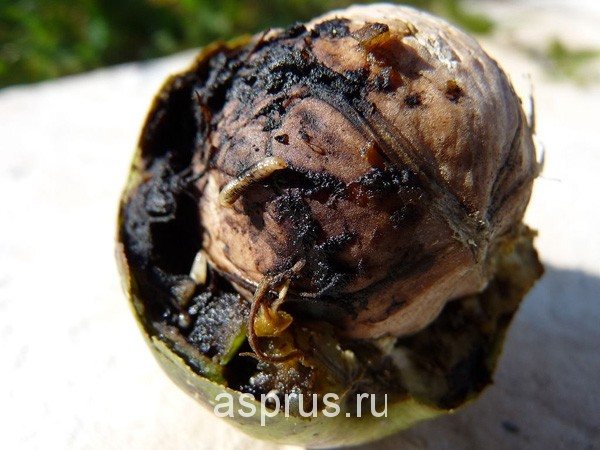

Nut damaged by caterpillars of the codling moth
Bacteriosis
The bacteriosis is caused by the Xanthomonas bacterium. The entire tree is covered with dark spots. Warm and damp spring weather is favorable for infection.
The disease destroys flowers and young ovaries, nullifies the productivity of the shrub. The main vectors are insects and pollen. If the disease occurred at a later time, then the losses will not be so great. Young shoots begin to die off, and the wood begins to lose its valuable qualities. Brown spots on the fruits become depressed over time and change color to black.
In the presence of bacteriosis, the walnut becomes covered with dark spots.
A bacterium trapped inside the fetus causes the nucleus to rot. Infected nuts fall to the ground even before the full ripening period begins. If the tree is infected when the fruits have already ripened, then the pericarp takes the whole blow.
The bacteria spend the winter in the foliage, buds and shoots of the culture. The plant is treated before flowering. The fight against them is carried out with the help of urea (1%) or Bordeaux liquid (3%). Re-processing is done in 2-3 weeks.


